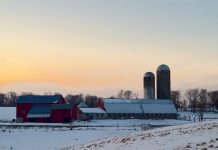Hello Friends!
As we wrap up a challenging summer, many farmers out there are gearing up for the fall corn and soybean harvest. Patchy summer rains and variable field conditions will really make yield maps have some pretty colors. This is one of those years where you can have record yields in one part of a field and have other spots that yield next to nothing in the same area. Of course, not everyone has those fancy yield maps that can be analyzed for hours on end. Even so, most farmers now have at least some sort of yield monitor in the cab, which is still a long way from my early days of watching the little window in the grain hopper to see how fast it was rising.
Producers with knowledge of where their high-yielding acreage is located as well as their poor-yielding ground might want to consider making use of the Conservation Reserve Program (CRP) to increase their average yield and increase profits.
Stabilize income
The CRP can be used as an effective tool to stabilize income on acres that are non-productive year after year. Acreages that are on non-productive soils, are under constant wildlife pressure, or are affected by other threats that are beyond your control may be better off enrolled in CRP.
The CRP provides consistent and competitive income on an annual basis. Removal of this marginal ground from your rotation will increase your overall yield and also eliminate expensive input costs on land that will not produce enough to cover expenses.
Sound good? Now comes the catch. Your (or your landowner’s) acreage has to be eligible to be enrolled in CRP to make this work.
The first thing FSA looks at is cropping history. The acreage must have been planted to an eligible commodity four out of six years from 2008 through 2013. Crops in a rotation can be considered based on the rotation.
If your land meets the cropping history, it can be enrolled this fall if it meets certain criteria making it “environmentally sensitive.” That is a fancy term, but all it means is that it has to be the type of acreage targeted by USDA. This includes acreage that is within 120 of a stream or river, ground has an erodibility index over 19, or even land subject to gully erosion.
Even if your acreage does not met any of these special criteria, all that means is that you will have to wait for the next general CRP signup to offer your acreage.
One thing to remember is that the CRP is not an all-or-nothing program. Once you determine you have eligible acreage, you can pick and choose what acreage you want to enroll. Filter strips are a good example. You may want to put a 30-foot filter strip in one area and a 120-foot filter strip in another.
We are coming up on the perfect time of the year to identify those areas of your farm that may be better suited to be idled under the CRP program. Maybe this will be something you can think about the next time you jump in the cab and kick in the auto-steer. It’s better than sleeping.
That’s all for now!
FSA Andy













